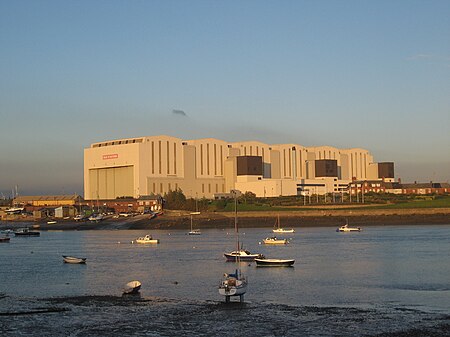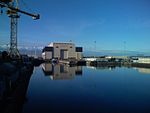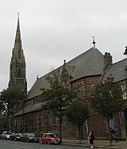BAE Systems Submarines
2003 establishments in EnglandBAE Systems facilitiesBAE Systems subsidiaries and divisionsBarrow-in-Furness port and shipyardBritish Shipbuilders ... and 4 more
Companies based in Barrow-in-FurnessShipbuilding companies of EnglandTrident (UK nuclear programme)Use British English from February 2017

BAE Systems Submarines, is a wholly owned subsidiary of BAE Systems, based in Barrow-in-Furness, Cumbria, England, and is responsible for the development and production of submarines. It operates one of the few shipyards in the world capable of designing and building nuclear submarines, which has constructed all but three of the Royal Navy's nuclear-powered submarines since the commissioning of HMS Dreadnought in 1963.
Excerpt from the Wikipedia article BAE Systems Submarines (License: CC BY-SA 3.0, Authors, Images).BAE Systems Submarines
Cornmill Crossing,
Geographical coordinates (GPS) Address Nearby Places Show on map
Geographical coordinates (GPS)
| Latitude | Longitude |
|---|---|
| N 54.11 ° | E -3.2363888888889 ° |
Address
Devonshire Dock Hall
Cornmill Crossing
LA14 2LJ , Hindpool
England, United Kingdom
Open on Google Maps










